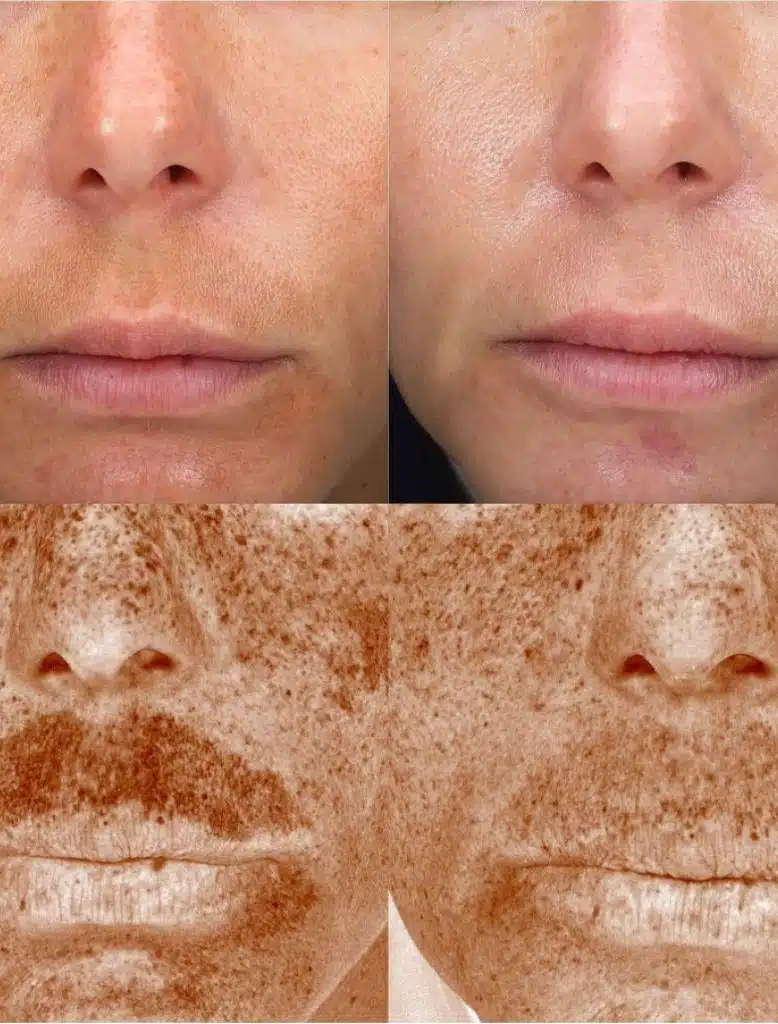Melasma

Melasma is a specific type of hyperpigmentation commonly seen on the face and appears as irregular patches of increased pigmentation. Often seen on the forehead, cheeks, nose and jawline melasma can cause debilitating distress due.
What causes Melasma?
Genetic predisposition, hormonal influence, visible light exposure and heat are triggers for the development of melasma. Melasma results from the overproduction of melanin and can be superficial (epidermal), deep (dermal) or both. Triggers can include the use of hormonal contraception, pregnancy, and hormone replacement therapy. Up to 50% of all pregnant women develop melasma which is why it is often called the mask of pregnancy. Thyroid disorders can also play a role as well as heat. Increased pigmentation is often irregular and seen on the bony prominences of the cheeks, nose, forehead, and jawline. This form of hyperpigmentation also has the irregular formation of blood vessels in the dermis.
How to Treat Melasma?
It is a condition that waxes and wanes and can be controlled rather than cured. Effective management requires a comprehensive, multi-pronged approach with SPF (photoprotection) as the cornerstone of treatment. Avoiding sun during peak hours, meticulous sun protection and physical barriers such as wide-brimmed hats and sunglasses is essential. Avoiding sauna or steam should be considered. Prescription triple combination creams using hydroquinone, a retinoid and topical steroid can be effective, particularly in epidermal melasma. This can be irritating to skin so starting slowly is essential. Other topical skin brighteners can be compounded with alternatives to hydroquinone with similar results. In office treatments can involve topical depigmenting compounds to reduce the excess pigmentation in higher layers of the skin, chemical peels to remove pigmentation in middle layers of the skin and laser therapy to remove both superficial and deep layers of pigmentation. Oral medication may also be used.
It is a complex skin condition that can be frustrating and ongoing. Determining the best course of action is needed for optimal results. Schedule a consultation to determine how to best treat melasma.
Testimonials
Trustindex rating score: 4.7 of 5, based on 222 reviews
Book Consultation
As a leading Oculoplastic Surgeon with special interest in Facial Aesthetics, Dr. Maryam Zamani has garnered a global reputation - both in the US and UK - for her meticulous attention to detail and sought-after techniques for eyes and facial aesthetics.
Find The Clinic by Dr Maryam Zamani in the heart of Chelsea
Located on the Kings Road, our clinic is easy to reach from Chelsea, Kensington, Belgravia, Knightsbridge, South Kensington, Fulham and Battersea. We are positioned just moments from Sloane Square with excellent transport links across Central and South West London.
Book Now.avif)



